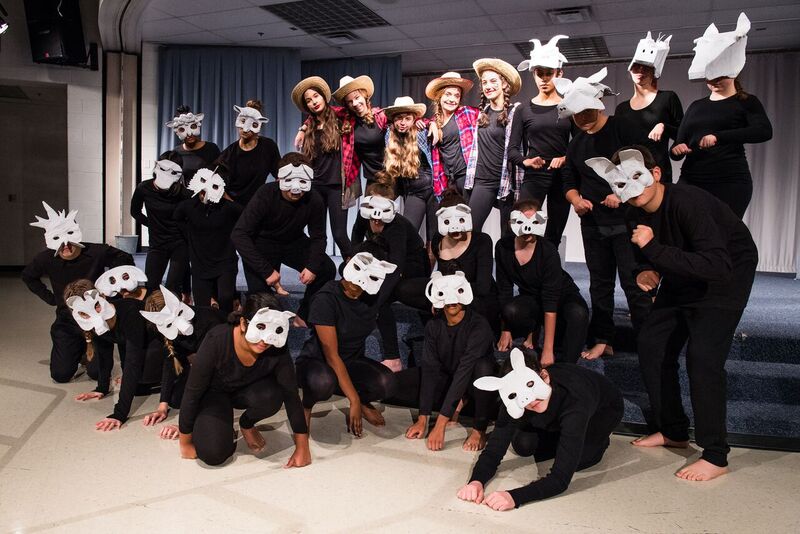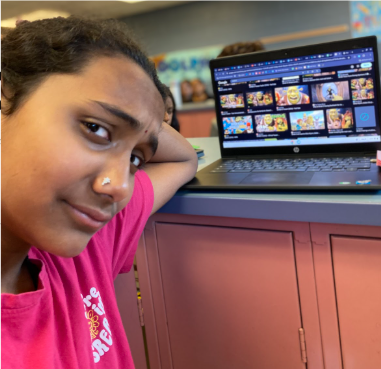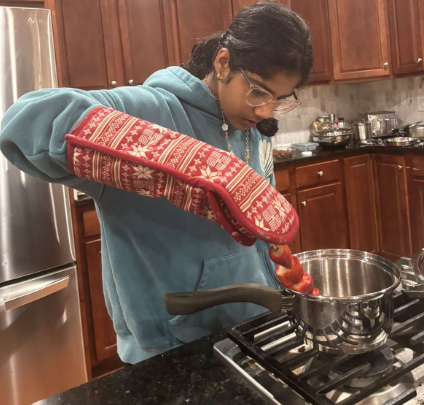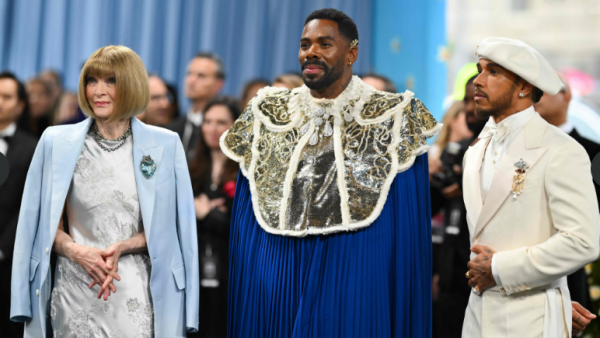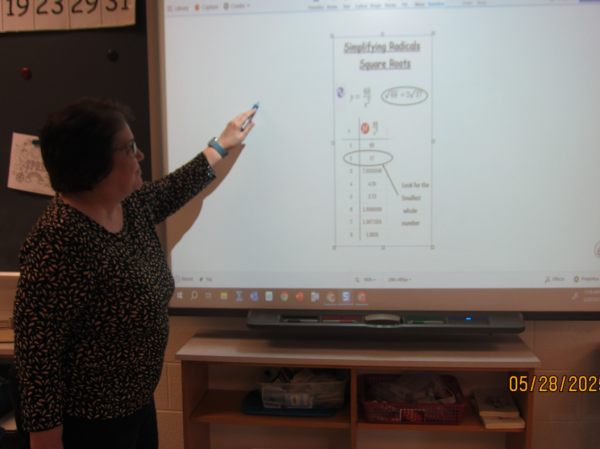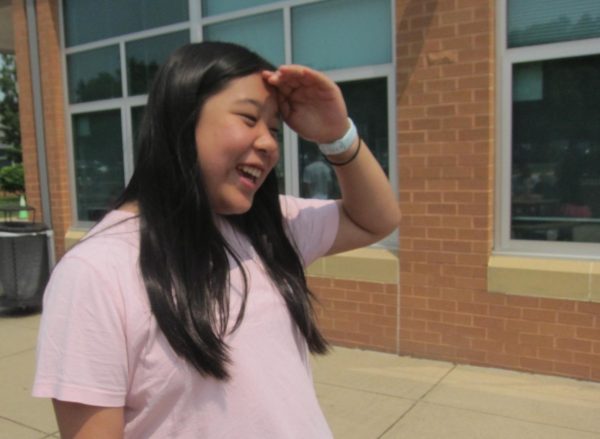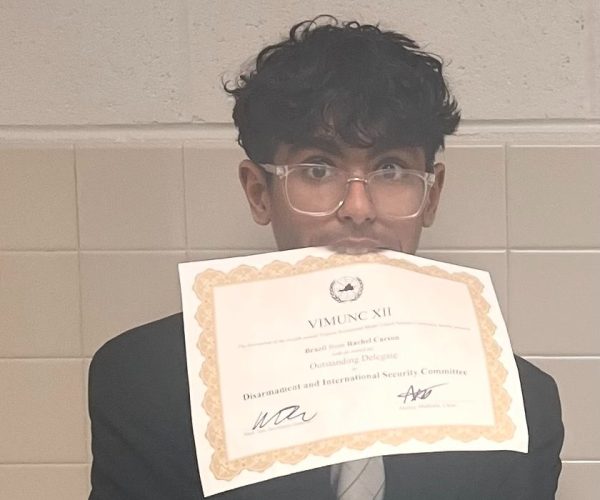Carson presents: Animal Farm
Photo Credit: Brandon Ginsburg
The auditorium goes dark. The crowd quiets down. The narrator steps out into the open and the story begins — the story of Animal Farm.
Rachel Carson presented the fall production Animal Farm performed by the advanced drama class on Nov. 16 and 17.
“The actors know what they’re doing and have a great show going for them,” said Ava Beaudin, a student director for the fall play.
The fall play was an adaptation of Animal Farm, a novella by George Orwell. This story may seem like a childish play with all the characters being talking animals, but there is actually a deeper message being conveyed.
Animal Farm is based off the Russian Revolution, the story of how the Bolsheviks conquered Russia and attempted to rule the nation. Each character in Animal Farm represents a real historical figure that was part of the Russian Revolution.
The book portrays crucially important events that happened during the Russian Revolution. This book was written to show how humans minds were functioning, leading to power imbalance within the government. The author managed to represent these ideas in a children’s book.
For example, Mollie, the pretty white mare, represents the middle class and Moses the Raven represents religion. The pigs represent people such as Leon Trotsky, Joseph Stalin and Vladimir Lenin.
At Rachel Carson Middle School, the Advanced Drama class has been working to produce this play for many weeks now.
Animal Farm was student-directed. The casting, directing, stage managing, and the written script was all done by students. Abby Cortez adapted Animal Farm into a script last spring, and this was the script that they used for the play.
Performing in the play is a chance to try something different since every student in the class is part of the play, or directs it themselves. With hardly any teacher direction, this play consists of multiple parts for each main character, so everyone gets an opportunity to act.
Ava Beaudin cast with fellow students directors, Steven Labovitch and Seth Cortez. The casting process required people to go up and read a section of the script out loud. Then, the student directors decided who was the best person for the role.
“When actors are projecting, their volume, their clarity, while making something into a story, how they can turn into an animal,” Ava said, “because that’s what the story is really about.”
“This particular play is challenging for the actors,” Ava said. “A lot of confusion and stepping into the animal because going from human, it’s hard to become an animal. There was an actress who came in to teach us how to behave and act like an animal.” She says the first day was the hardest because nobody was used to walking on all fours.
Elli Vlattas, a student who plays the lead role of Napoleon, said that most characters are played by two or more people, causing many transitions throughout the play.
She said while describing Napoleon’s character, “Napoleon is a control freak and he wants everything to go his way. He also doesn’t care about anyone else, but it’s fun to try a different role.”
Animal Farm wasn’t produced by just the Advanced Drama Class, but also the 3D Art students of Rachel Carson.
“We try to make the masks fit each character’s personality,” the 3D Art teacher, Calandra Couch said. “All of us, we sat down in a circle and read through the entire script in order to fully grasp the characters and their behavior. While we make the mask, we incorporate little hints and details about that particular character.”
They used different styles and shapes for the masks to convey more about the characters. “We did a few hat styles too, like the horses are bigger animals and so we want them to seem bigger onstage too.”
“I made Clover, the mother horse,” said Mikayla Glantz, one of the 3D Art students. “We made it with papier-mâché, cardboard, paper, and hot glue.”
The papier-mâché masks take about a month to complete. “These masks take a lot of perseverance because it takes so much time, from the designing to putting layers and layers of papier-mâché,”
This play was the fruit of many months of labor. From the casting to the directing, the lighting and the stage design. The sheer amount of effort and hardships they had to overcome during the productions are overlooked. With every drama class along with after school practices, hours are spent on a production with two showings.
They all come together in a single moment onstage. A clear conveyal of each character to the audience. Each act fits in piece by piece. The singing of the “Beasts of England” signal the ending. By the time the final act is over, the audience is silent before cheers, claps and whistles fill the lecture hall. Meanwhile, “Beasts of England” still echoes in the auditorium.
Emmy Truong is an eighth grader. She enjoys watching Netflix, sleeping and eating. Her two favorite shows are "The Flash" and "Grey's Anatomy." Her favorite...
